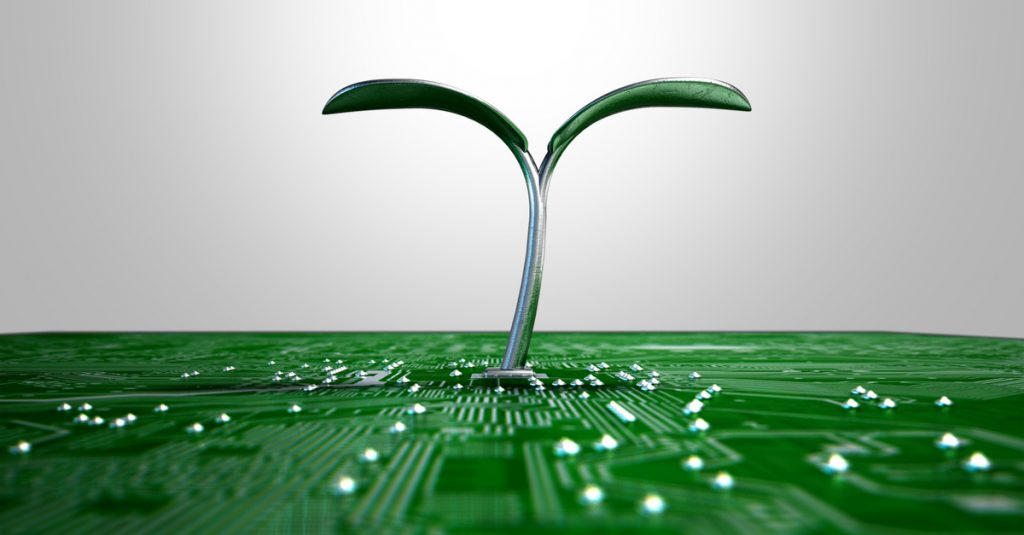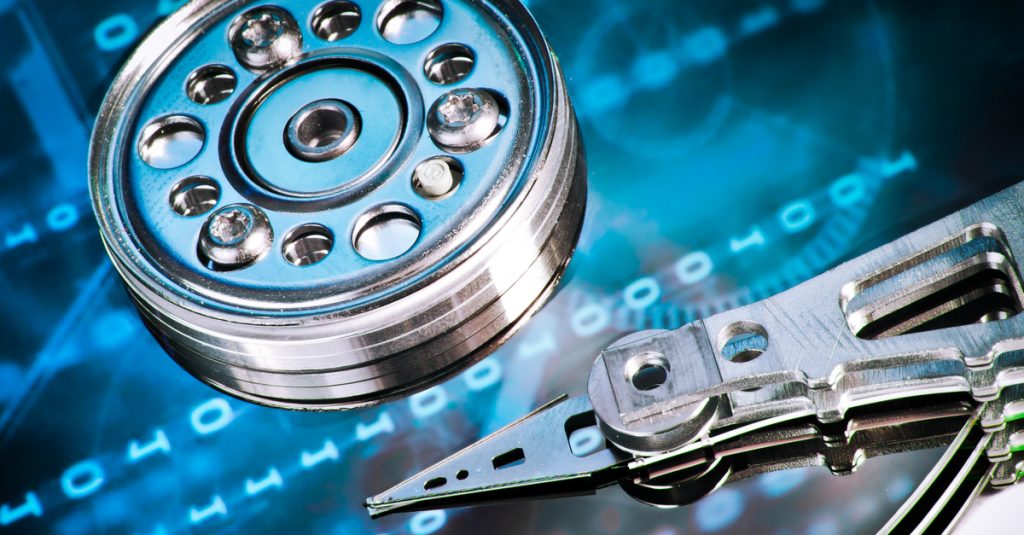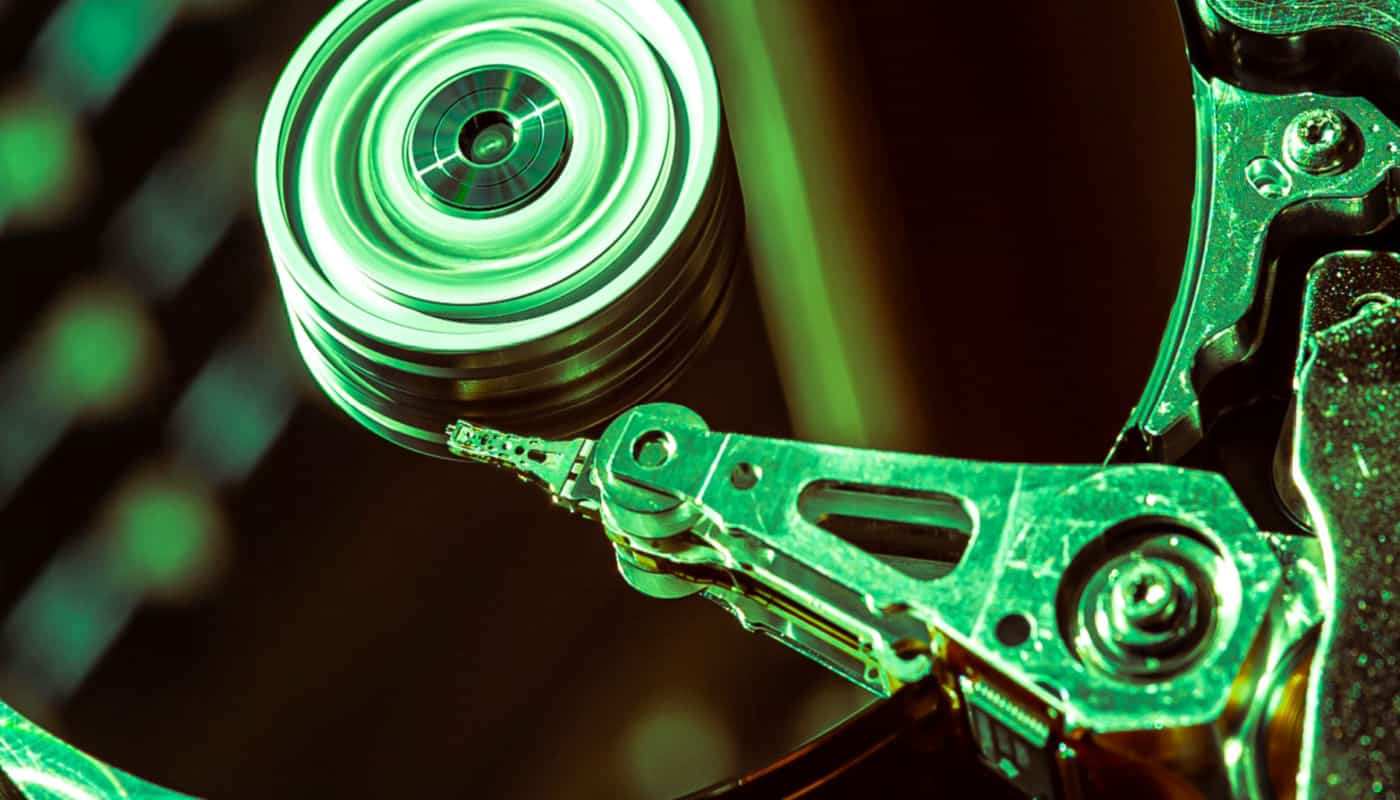Growing momentum around green computing highlights the role that data center storage has to play in advancing sustainability.
Data centers: they’re more essential and more advanced than ever. That’s great for efficiently utilizing and storing vast amounts of data. However, the sheer scale of global storage poses financial and environmental challenges, too.
According to a late 2021 estimate by WEEE Forum (Waste Electrical and Electronic Equipment), 57.4 million tons of e-waste was generated in the preceding year. Emissions also remain an issue, with data centers comprising almost 3% of all power consumed globally. And it’s not just decommissioned servers, discarded cell phones and outdated appliances. A steady slice of that waste comes from retired storage devices, too.
The battle is not over, though. The past few years have seen a surge of innovation when it comes to sustainability in hardware. While widespread adoption of green computing practices remains sluggish, the ongoing increase in IT budgets and growing awareness of technology’s environmental impact means that circularity is finally emerging into the mainstream.
E-waste and Emissions
It’s true e-waste is piling up. If current trends continue, there will be 74.7 megatons of e-waste generated by 2030. That’s almost 20 lbs. per capita一roughly three watermelons of e-waste per every person on the planet!
Clearly, reducing this load will require changes throughout the tech industry. Given the scale of data generation, industry efforts to green the data center have a central role to play.
Of course, greening the data center is more of a necessity than a choice. The reality is that data center energy use, as a percentage of overall demand, is soaring. Data centers may account for a stunning 8% of global energy demand by 2030.

RELATED READING
What are the barriers to hardware reuse in the data center?
Five Obstacles to Data Center Hardware Reuse and Remarketing
And while data center managers are more aware of energy waste than a few years ago, that is only slowly translating into action. For instance, Microsoft’s emissions rose substantially over the pandemic, from 11.2 million to 13.8 million metric tons of carbon dioxide.
Understanding Emissions Scope
To get a clearer picture of just where emissions are coming from, it’s useful to categorize sources into three “scopes”:
| Scope: | Definition: | Examples |
| Scope 1: | Direct emissions from operations that are controlled or owned by the company. | On-site energy useFuel consumption of company vehiclesGasses that leak from refrigerants. |
| Scope 2: | Indirect GHG emissions from the generation of purchased or acquired electricity, steam, heating, or cooling consumed by the reporting company | Data center powerCooling drives. |
| Scope 3: | All indirect emissions (not included in scope 2) that occur in the value chain of the reporting company, including both upstream and downstream emissions. | Outsourced manufacturingOutsourced transport & shipping. Energy consumption of those using your product. |
Scope 3 emissions can be quite hard to control, especially for smaller companies. Unlike Microsoft, they are typically in no position to make demands of suppliers. Scope 1 and 2 is where firms can really make a difference.
Greener Drives and Energy Efficiency
One route to green computing is by making storage drives more energy efficient, resulting in lowered power consumption and reduced emissions.
As it happens, much of the momentum toward energy efficiency in data center storage occurs organically. As storage becomes denser, drives tend to become more energy efficient on a per terabyte basis.
There’s also an argument for doing a better job of using what we already know works. Sometimes what’s needed is not new tech, but applying existing tech in new places. For example, SSDs in laptops and other personal devices require almost zero power while idling. “[But] those types of technologies are not present in enterprise equipment”, says Jonmichael Hands, VP of storage business development at the Chia Project.
As Hands points out, there’s an excellent opportunity to apply this tech to save power in drive-host interactions. These interactions often involve a great deal of idle time, such as with archival storage.
Reusing and Reselling Hardware
Promoting energy efficiency within the storage drive is one thing, but one of the best ways to green your data center is to reuse your retiring drives. It’s too easy to decommission a bank of drives without exploring options for their secure redeployment. There are several ways to go about this.
The most straightforward way is internal reuse of hard drives. Putting old tech to different uses within the same organization can take a bit of creativity, but the potential savings are real.
Also, while data security is critical, internal reuse is often subject to less restrictive wiping protocols. That said, you still want to apply robust security controls as the drives move around your campus — or to other sites within your organization.
Another reuse strategy is purchasing factory recertified drives. Recertified drives are securely wiped, and then put through a rigorous testing process to ensure they meet the highest standards of security.
Investing in factory recertified drives is a great way to make your operations leaner and greener while reducing total cost of ownership.

RELATED READING
Good as new, and greener too! Check out our overview of factory recertified drives.
Hardware Recycling
Sometimes a drive can no longer be reused internally or remarketed externally. Nonetheless, it still contains a great many valuable components. This is especially true of hard disk drives一just ask industry group iNEMI.
Here’s a non-exhaustive list of materials within HDDs which iNEMI has demonstrated how to reuse:
- Voice coil magnetic assemblies. These consist of coils suspended between magnetic plates, which drive the suspension arm with the detection head. These magnets contain rare earth elements, and can be extracted for reuse in new drives.
- Spindle magnets for reuse in non-HDD devices. In the event that magnets cannot be directly reused, new magnets can be created from old ones.
- Used magnets can also be converted into rare earth oxides, ingots of which can later be remagnetized.
Reuse, resell, recycle: there are many ways in which used drives can feed into the circular economy.
iNEMI diagram showing the different stages at which HDD can feed into the circular economy (link)
Proper recycling procedures will get easier as they become more standard. If you don’t have the resources to recycle responsibly yourself, consider getting in touch with a vendor who does.
Designing Green Hardware for Circularity
Organizational reuse and recycling go a long way toward reducing e-waste, but it’s only part of the picture. There’s a huge amount still to do to promote reuse among manufacturers and standard setters.
One of the main obstacles for reuse is that OEMs don’t typically design drives with longevity and sustainability in mind.
Interestingly, such design is often in tension with the common focus on serviceability and reparability within data centers. Why design a component to last if you can easily swap it out with a new one?
“Designing components to be easily serviceable may lead to favoring the swapping out of entire sub-assemblies or components over identifying the true root cause, if typical diagnosing tools are not able to identify the issue(s).”
OCP Sustainability Whitepaper
Promoting Interoperability
Sometimes, however, interoperability of components can reduce e-waste. For example, disaggregated servers not only allow faster hardware refreshes; they also enable more incremental hardware updates. That way, one needn’t replace an entire server in order to take advantage of new tech. Such is the philosophy behind the open hardware movement as championed by the Open Compute Project Foundation.
Stephen Buckler, chief operating officer of Horizon Technology, says the work of the OCP is important not only in driving up efficiency and common hardware standards but in reducing costs and promoting sustainability across data centers.
“The purpose of the OCP is to get away from legacy proprietary black box solutions to an open standard that offers efficient, environmentally friendly, scalable and cost-effective solutions that promote the growth of cloud computing,” Buckler remarks.
“The use of generic components not only drives down cost but offers flexibility in making changes as necessary within a data center. It also contributes to the reuse of components, lowering costs further and proving positive for the environment.”
Of course, designing for circularity remains tricky; what matters isn’t just the tech, but the behavior the tech incentivizes in its human operators. This means it’s important for manufacturers and enterprise users alike to communicate clearly when it comes to designs and standards.
Sanitization Standards For Green Computing
One major driver of e-waste is an understandable concern about data security and compliance. Established government guidance has long been understood to encourage the physical destruction of drives, even though such a drastic step is typically unnecessary.
Instead, a robustly managed process of secure data sanitization will usually prove more than adequate for processing the drive. “Destroying drives to protect data is a symptom of legacy thinking,” states Buckler.
Nonetheless, companies must ensure their sanitization vendor has clear methods in place to verify their work, he says. “Ask your contractor about the robustness of their process for verification.”
Understanding Sanitization Methods
Sanitization methods are often organized into three categories. The first is to clear a drive, so as to completely remove all data. The second is physical destruction, which renders the drive inoperable. An (often overlooked) third option is purge, which uses a combination of erasure and encryption to render it infeasible to read any data which may remain on the drive.
With a purge, it’s not impossible that someone could guess an encryption key to decode intercepted data. But the chance is so vanishingly small, and a hacker would need to try so many combinations, that it’s infeasible, and consequently the data is safe to all intents and purposes. In fact, the overwhelming majority of internet security rests on this principle of infeasibility.
“We understand this encryption technology, we use it and trust it across all the devices across all the data centers on the planet today. So we can use that same technology to basically instantly render all of the data on the drive inaccessible.”
一Jonmichael Hands, VP storage business development at The Chia Project
What’s needed are new standards which clearly outline the proper means of purging drives. Fortunately, just such a standard, IEEE P2883, is under development.
The Future of Green Computing
Right now, the green data center is in a state of flux.
On one hand, there’s been a watershed of studies and experiments in value recovery for storage devices. This, together with a great deal of careful standards work, means that companies have the tools they need to approach the challenge of e-waste and emissions head on.
On the other hand, there hasn’t yet been a similar watershed in adoption.
There’s every cause for optimism, though. The fact is that every bit of effort data center managers put towards purchasing green tech一alongside repurposing or recycling what they’ve already got一brings us closer to the desired tipping point. The time is ripe一a concerted push can edge truly green computing into the mainstream.
Find out how Horizon can help green your data center hardware securely while reducing total cost of ownership.











